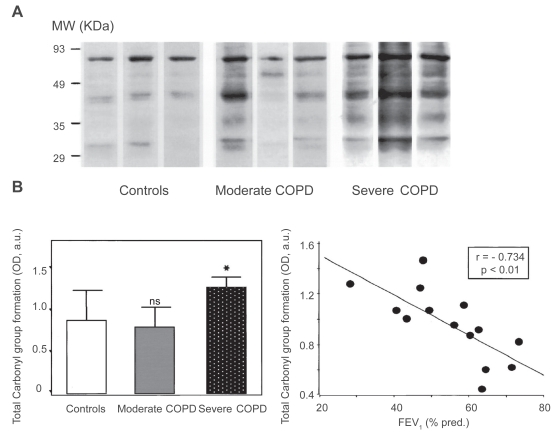Figure 4.
A) Representative examples of protein oxidation (total carbonyl groups) in diaphragms of control subjects and patients with moderate and severe COPD. B) Mean values ± SD of total carbonyl formation higher in the patients with severe COPD, compared to control subject muscles (*p = 0.05). No difference in total diaphragmatic carbonyl formation between patients with moderate COPD and control subjects (ns = nonsignificant). Among overall patients with COPD, optical densities of total carbonyl group formation significantly correlated with FEV1 (% predicted). Note that 14 COPD patients are depicted (two mild, six moderate, six severe) in correlation graph. Patients with moderate COPD have FEV1 and FVC of 62 ± 4 and 72% ± 11% of predicted, respectively. Patients with severe COPD have FEV1 and FVC of 42 ± 7 and 54% ± 9% of predicted, respectively. Copyright © 2005. Adapted from Barreiro E, de la Puente B, Minguella J, et al 2005a. Oxidative stress and respiratory muscle dysfunction in severe chronic obstructive pulmonary disease. Am J Respir Crit Care Med, 171:1116–24.
Abbreviations: COPD, chronic obstructive pulmonary disease; FEV1, forced expiratory volume in one second; FVC, forced vital capacity.

